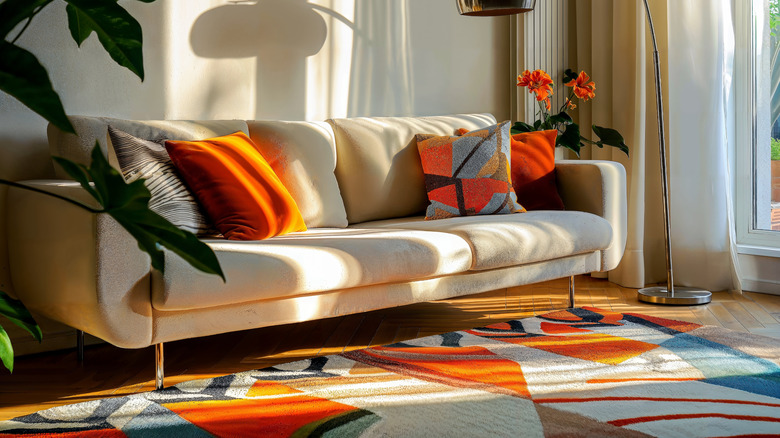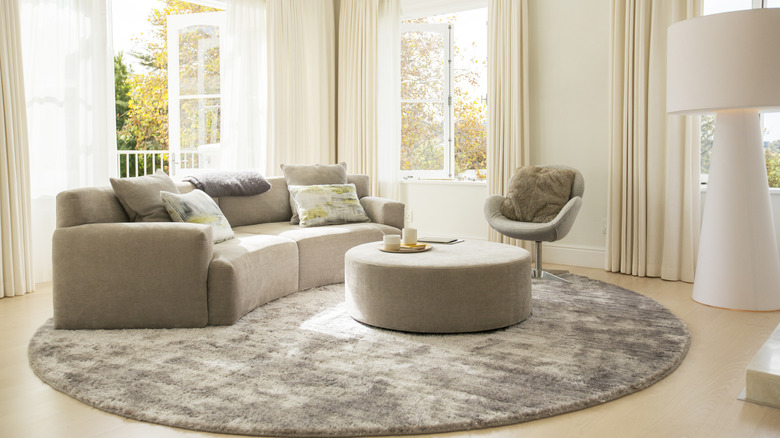Start With The Rug And Build From There: The Living Room Design Strategy That Really Works
When faced with the blank canvas of an empty living room, your first instinct may be to choose a paint color or to figure out what furniture fits best. Still, in instances like these, it might be best to set traditional design strategies aside and create your dream room from the ground up by starting with a new rug instead. The right rug can evoke a coastal vibe or show off your boho side. A Scandinavian wool option, for example, might appeal to your minimalist roots, while something with a geometric pattern could be the key to the Art Deco living room you've always dreamed of. If you're unsure of where to start, consider choosing a rug based on your floor's color. Or, look in your closet, where you'll find clothes in the colors that appeal to you.
Deciding on a rug first, without considering the rest of the design elements in a room, may leave you with decision paralysis. If you find yourself in a tough spot like this, start by looking for ideas at the many websites that can help you find the perfect rug for your home instead of coming up with ideas on your own. Once you have a few strong contenders, try using websites that help you visualize the finished product by allowing you to choose paint colors and furnishings, and then move them around in a virtual room.
Ideas for designing from the rug up
For this design method to work, you should set aside any ideas of what a room should look like and simply try to find a rug that's the right size — and that you like. The right size rug is dependent on a number of factors, including how big or small your room is and whether you plan on layering your area rugs in one space to make your living room's colors pop. A large, rectangular choice can bring structure to a conversational seating area with a sofa, loveseat, or accent chairs. In this case, the general rule is to place all of the furniture legs, or at least the front legs, on the rug. In an open concept design where the living and dining rooms share space, use a large rug for the living room and a contrasting mat of a different shape for the dining area.
Still, shape is secondary to color, and you can match or contrast the colors on your rug with your furniture. Try choosing a solid color for the sofa, for instance, that matches a color on the rug, and use throw pillows that match the fabric's accent colors. If you're a fan of color drenching, you can match bold-hued walls with an equally vivid rug. A neutral or a solid-colored carpet puts very few limitations on your design choices, while a bright, solid color can add warmth to industrial design without being too busy.

